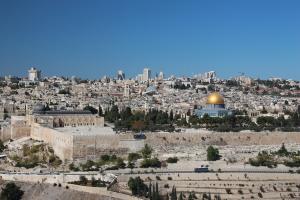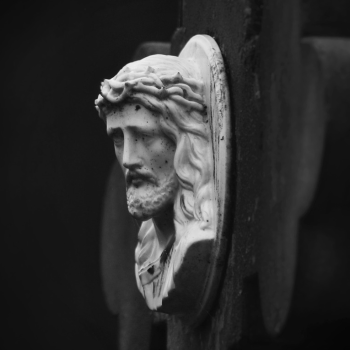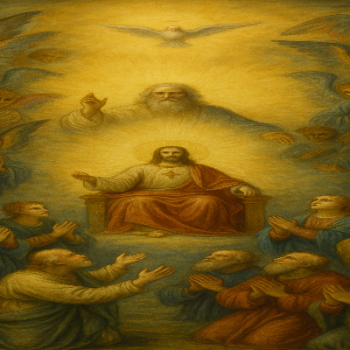
The Bible depicts several remarkable and miraculous events at the moment of Christ’s death. One such event is the tearing of the Temple veil.
In this paper, I will discuss the importance of the Temple to Judaism and the nascent Catholic movement. I will then examine how the Bible describes the tearing of the veil. Finally, I will place the event within a larger eschatological framework.
It is impossible to have a comprehensive understanding of Catholicism without a basic understanding of the Judaism of the Old Testament. It is equally impossible to understand the significance of the tearing of the veil without understanding the significance of the Temple in Jerusalem.
At approximately thirty-seven acres, the Temple would have been the center of Jewish life in Jesus’ time. The Temple’s religious significance cannot be understated. For thousands of years, it was the site of the ritual sacrifices prescribed by the Torah. Most importantly, the Temple housed the Holy of Holies.
The Holy of Holies refers to the Temple’s most sacred area. At the time of its construction, this inner sanctuary would have contained the Ark of the Covenant. Because it was believed that God resided within the Holy of Holies, access was limited to the Israelite high priest, and even then, only once a year. On the Day of Atonement, the high priest entered the sanctuary to burn incense and sprinkle sacrificial animal blood. By this act, the high priest atoned for his own sins and those of the priesthood.
Separating the inner sanctuary from the rest of the Temple was the veil. To properly get a sense of what tearing the veil would have entailed, it should be observed that the veil was approximately sixty feet tall and four inches thick. The material used for the veil was likely fine linen. Suffice it to say that tearing it would have been a significant feat.
Before proceeding to the Crucifixion and the veil tearing, it is theologically significant to realize that Christ becomes the new Temple, the new Holy of Holies. When questioned by whose authority He was acting, Christ cryptically responded, “Destroy this Temple, and in three days, I will raise it up.” Those who heard this were incredulous, pointing out that it had taken forty-six years to build the Temple. Only after Christ had risen on the third day did His apostles realize that He was referring to Himself as the Temple. (See John 2:18-22). Viewing Christ as the new Temple will allow us to place the tearing of the veil in a more illuminating light.
The tearing of the veil is portrayed in all three of the synoptic gospels. At the moment of Christ’s death, “Jesus cried out again in a loud voice and gave up his spirit. And behold, the veil of the sanctuary was torn in two from top to bottom.” (Matthew 27:50-51).
I want to touch upon three significant aspects of the tearing of the Temple veil. First, the Temple veil represented both a symbolic and physical separation of God and man. As indicated above, only the high priest was allowed access to the Holy of Hollies, and even then, only once a year. With the tearing of the Temple veil, that which separated human beings from God was removed. This means that we now have direct access to God in the person of Christ, and we have this access at any time. The concept of accessibility to God leads to the second point.
The tearing of the Temple veil can be seen to symbolize the destruction of the Temple and, with it, the ushering in of the New Covenant with its attendant worship. Moreover, the Old Covenant worship was predicated on believing God resided in the Temple. However, with the advent of the New Covenant ushered in by Christ, the God who made the world and all that is in it, the Lord of heaven and earth, is no longer “limited” to dwelling in the Temple (see Acts 17:24).
Finally, the tearing of the Temple veil means that Christ is the new Temple. Pope Benedict put it this way, “With his Resurrection, the new Temple will begin: the living body of Jesus Christ, which will now stand in the sight of God and be the place of all worship. Into this body, he incorporates men.” This incorporation is into the mystical body of Christ, which is the Catholic Church.
Without question, the destruction of the Temple in Jerusalem has significant eschatological implications in Judaism. However, understanding Christ as the new Temple also has eschatological significance for Catholicism. To see why this is the case requires evoking language from Mark’s Gospel and the Book of Revelation.
The Markean text is too lengthy to be quoted in its entirety. The gist of the relevant parts of Mark, chapter thirteen relates to the destruction of the Temple in Jerusalem, “Do you see these great buildings? There will not be one stone left upon another that will not be thrown down” and the end times, “When you hear of wars and reports of wars do not be alarmed; such things must happen, but it will not yet be the end. Nation will rise against nation and kingdom against kingdom. There will be earthquakes from place to place, and there will be famines.”
The second bit of Scripture that suggests that Christ is the new Temple is Revelation 21:22. In this verse, John is describing a vision of the “New Jerusalem” that will be established after the Second Coming. “I saw no temple in the city, for its temple is the Lord God Almighty and the Lamb [i.e., Christ].”
In tearing the veil, Christ dispenses with the Temple worship of the Old Covenant and ushers in the New Covenant. Christ is now the living Temple, and the Church is His mystical body.
In this essay, I have endeavored to describe the importance of the Temple in Jerusalem and the theological significance of the tearing of the Temple veil at the moment of Christ’s death.













